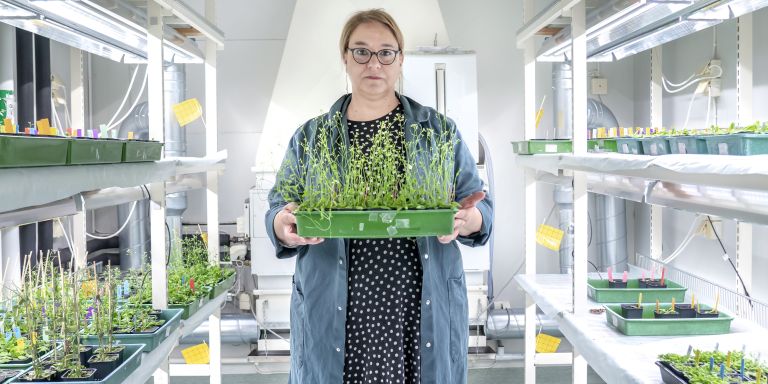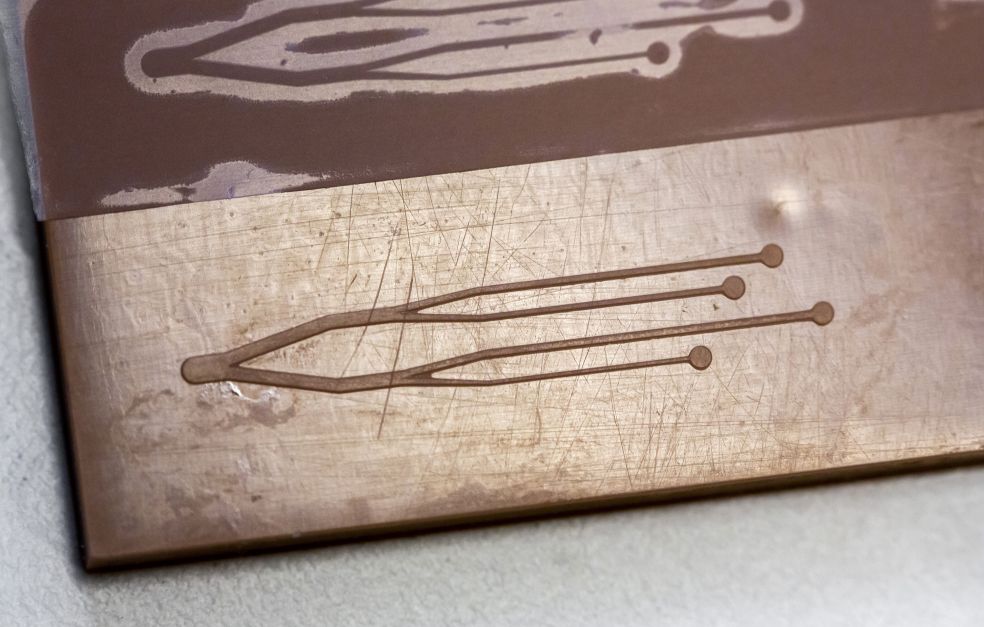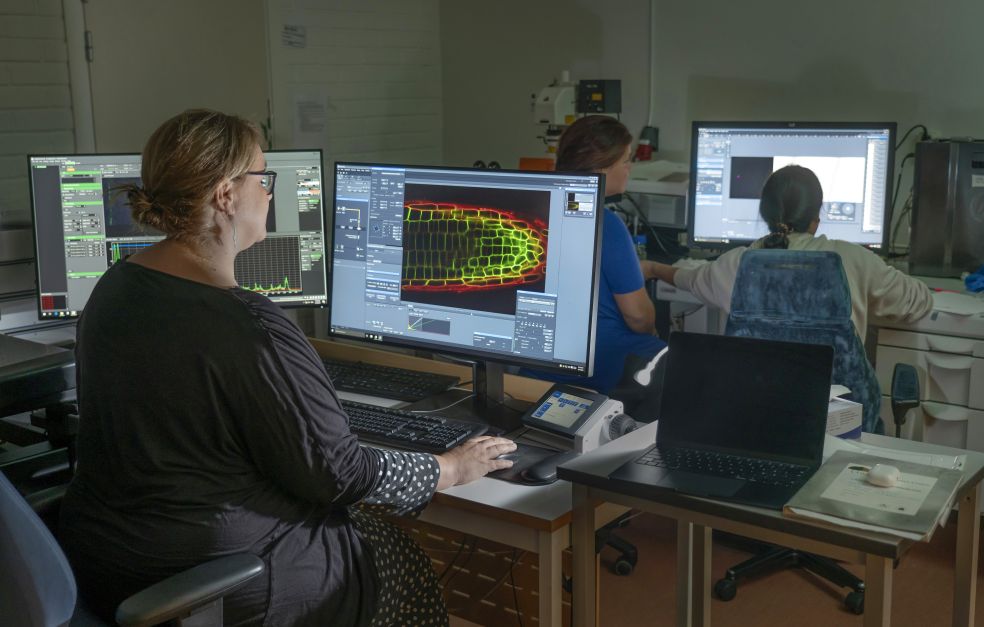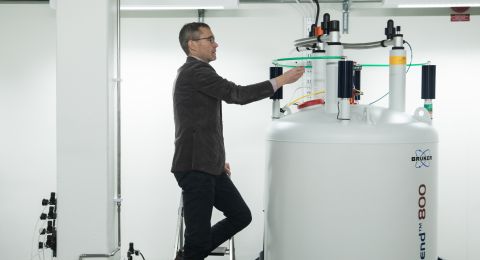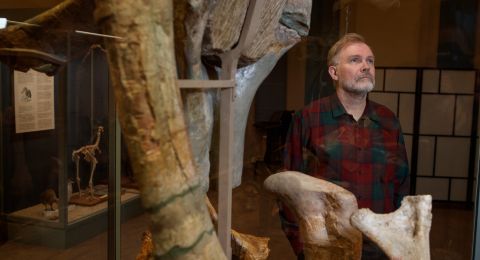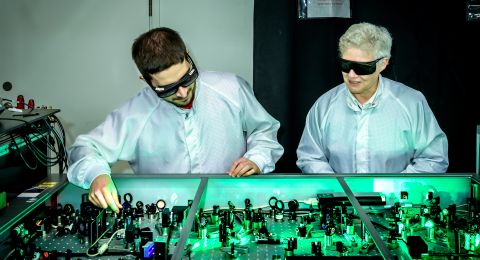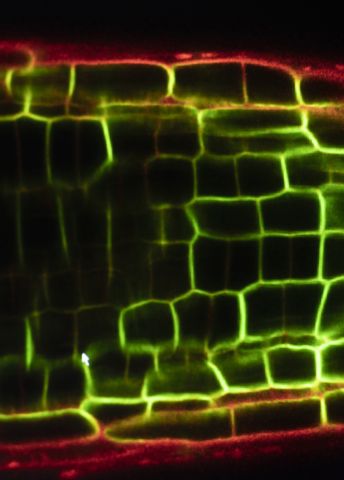
Project Grant 2022
Decoding cell fate with positional information
Principal investigator:
Professor Stéphanie Robert
Co-investigators:
Swedish University of Agricultural Sciences
Peter Marhavy
Umeå University
Stéphane Verger
Linköping University
Eleni Stavrinidou
Uppsala university
Maria Tenje
Institution:
Swedish University of Agricultural Sciences
Grant in SEK:
SEK 32.2 million over five years
“This field is remarkably captivating and complex, offering insights into life processes across all living organisms.”
This is how Robert describes research in plant development – a field she has dedicated two decades studying.
“Our entire society is based on plants – what we eat, what we wear, how we can mitigate climate change. Studying plant development enables us to contribute to a more sustainable society and to achieving the global targets for sustainable development, for example by helping to create more efficient farming methods, more resilient plants and a shift in global food production,” she says.
Plant cell position critical
Robert is a professor at the Swedish University of Agricultural Sciences, Umeå, and is heading a new project funded by Knut and Alice Wallenberg Foundation. The aim is to reveal how the fate of plant cells is determined by their position in relation to other cells, and how interaction and communication between the cells dictates their identity.
“We believe that positional information, conveyed through signals from neighboring cells, plays a pivotal role in shaping the fate of developing cells. We therefore want to know more about this positional information – which signals are part of cell identity determination; what do they look like and how do they work? These are things we know very little about, so this project is really exciting” she enthuses.
The types of signal from the cells vary, and may consist of electrical, chemical or mechanical stimuli. The researchers are studying these phenomena in depth using root hair cells and non-hair cells from thale cress (Arabidopsis thaliana), a common model plant that has been found to be well-suited for the study of plant development processes. The researchers will be modulating different stimuli on the cells in the hope of learning more about the factors controlling their fate determination.
Ground-breaking research with microchips
The researchers aim to be the first to develop an artificial model of an Arabidopsis thaliana root on a microchip – a “plant-on-a-chip.” The method has previously been used to study human organs, but has never before been used to investigate plant biology.
“Using plant-on-a-chip gives a huge boost to plant development research, since it makes it much easier to examine and modify cells. We don’t know if we’ll achieve all our goals, but every step we take will be important. We have good prospects of raising Sweden’s profile in this field,” Robert says.
Key strategic know-how
Robert stresses that Sweden, with its huge tracts of forests and in key associated industries, is a particularly good country in which to study plant development and is internationally very attractive for performing plant research. She hopes the project will yield valuable knowledge about plant development, and ultimately create major benefits for society. Among other things, she believes that the knowledge will represent a valuable piece of the puzzle in developing more resilient trees and crops, better able to cope with climate change.
“Research on plant development provides vital long-term know-how and involves exploring various scientific disciplines, such as genetics, molecular biology, biochemistry and physiology. It gives us the opportunity to make ground-breaking discoveries, and helps us to gain a broader understanding of life processes, since many of those discoveries can also be used in other research fields,” she explains.
Benefiting from a broad range of skills
She thinks one of the main strengths of the project is that the team is made up of researchers from a broad range of backgrounds.
“The funding has enabled us to create a unique collaboration with a fantastic team. There’s a truly broad range of skills that have never been brought together before. This may help us to find the answers to new questions, and is a factor that I think gives the project a very good chance of succeeding,” Robert says.
Text Ulrika Ernström
Translation Maxwell Arding
Photo Johan Gunséus
